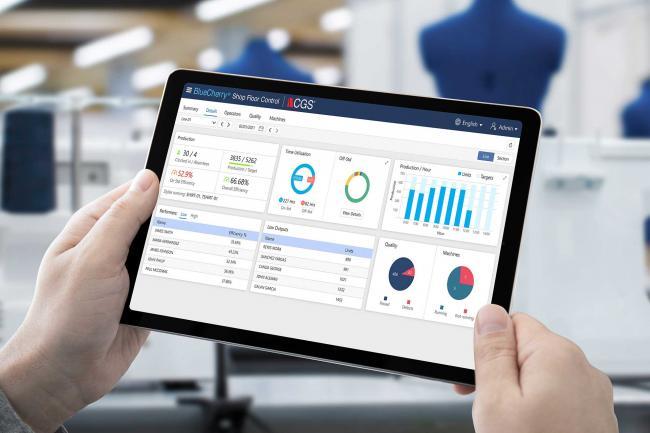Tell it like it is: Agile communication on the Shop Floor

Ideas, materials, and products are always in motion in the apparel industry.
Demand might be low while supplies are plentiful, yet shortages could appear when demand reaches its peak. The pandemic exposed and exacerbated this challenging dynamic: companies experienced both the pressure from demand shock during the “Great Cancellation,” as well as the challenges from supply shock as materials and transportation grew hard to come by.
In these tumultuous times, with so many unknowns still around the corner, brands and suppliers must be agile, able to pivot quickly as market conditions change. To keep up, they’ll need tools for more efficient and effective communication.
Flexible systems require ease of communication between brands and suppliers.
Yet, for years, the apparel industry has depended on texts, phone calls and emails, modes of correspondence that are slow and outmoded for a slew of tasks that require the most up-to-date information and swift activation. Data has often been recorded on paper – if it gets recorded at all.
In such conditions, when brands need to share design changes or suppliers need to convey capacity adjustments, wires can get crossed and communication may break down. These system malfunctions can lead to overproduction, job or pay cuts, and, ultimately, the erosion of trust between partners.
Updating cumbersome communication and information sharing processes has emerged as key to improving buyer-supplier dynamics and making their systems more flexible, according to the 2022 CGS report “How to Build Better Supplier Relationships While Boosting Efficiency.”
“[Supply chain digitalization] supports all trading partners through stronger communication, data sharing, visibility and knowledge,” CGS writes.
The challenges that erupted during the pandemic are not going away, and inevitably, the industry will face new ones.
Supply chain digitalization provides real-time information, enabling both suppliers and buyers to anticipate, address, and work together to overcome challenges, according to Paul Magel, president of the Applications Solutions Division at CGS.
“You can’t always anticipate everything,” Magel said in the report, “but you can minimize your risks by expanding and strengthening your supply chain partnerships so that you can act much faster, pivot and move production to a different area if there is a disruption in another area.”
One example of a valuable digital supply chain tool is Shop Floor Control (SFC) technology, such as the CGS BlueCherry® Shop Floor Control (SFC), which is usually cloud-based and connects stations across the shop floor. Data is collected right there in real-time, or close to it, providing insight into the assembly of products and quality control. A wide range of stakeholders – including onsite and offsite managers, executives, partners, and more – can access real-time data to identify mistakes, anticipate and avoid bottlenecks, and ensure that their partners are meeting Environmental, Social, and Governance (ESG) standards.
Empowered by real-time information, companies are able to address issues before or as they arise. With new awareness, companies can get more supplies or find new vendors, instead of getting stuck with unusable materials or unsellable products that go to waste.
“It’s about monitoring your symptoms before you get the prescription,” Magel said. “Do you have enough supplies? Where are the cargo containers?”
With a digital supply chain, there are no more missed calls, lost reports, or being “left on read.” Communication and information-sharing are easy and instant with SFC technology tools. Brands and their suppliers can be more agile and flexible while forging stronger relationships based on transparency and trust.
Download the whitepaper “How to Build Better Supplier Relationships While Boosting Efficiency” and get insights on how real-time information, enables both suppliers and buyers to anticipate, address, and work together to overcome challenges.

